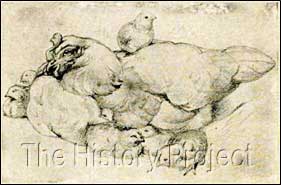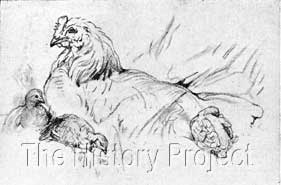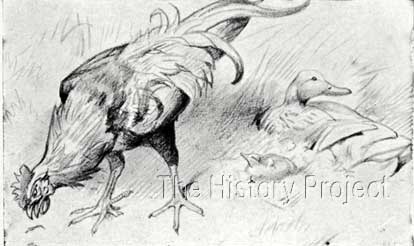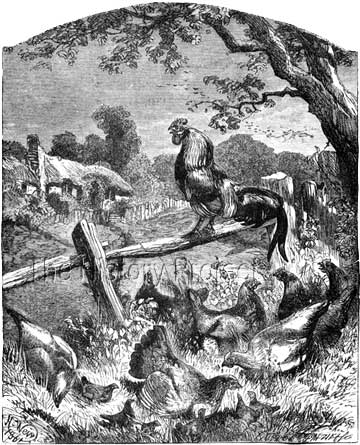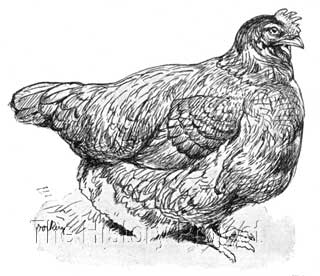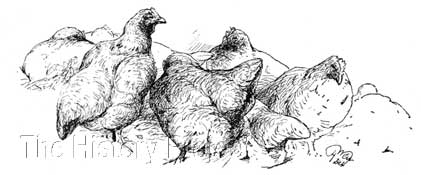 | |||||||||||||||









|
HARRISON WILLIAM WEIR (1824-1906)THE VERY EARLY YEARSWeir was the product of an upper middle class upbringing, his father John Weir had been a Bank Manager in Lewes and later worked as an Administration Clerk in the Legacy Duty Office, based at Somerset House in London. His mother was Elizabeth Jenner.
Harrison was the second son, the first being John Jenner Weir, born August 9th, 1822, followed by Harrison William Weir, on 5th May 1824. Both were born and raised in those early years, at Lewes in East Sussex, and both brothers grew up with an appreciation of nature, and in due course both also became amateur Naturalists. Harrison's passion and delight in animals and nature he personally endorsed in the preface to his 1889 publication Our Cats and All About Them in which he simply stated: "From a tiny child to the present, the love of Nature has been my chief delight; animals and birds have not only been objects of study, but of deep and absorbing interest. I have noted their habits, watched their ways, and found lasting pleasure in their companionship. This love of animal life and Nature, with all its moods and phases, has grown with me from childhood to manhood, and is not the least enjoyable part of my old age."
There can be little doubt that one of his earliest and possibly greatest passions, was for poultry. And that this youthful passion lasted a lifetime is evidenced by his epic work "The Poultry Book" published near the end of his extraordinarily productive life in 1902/1903. Both he and his brother John Jenner Weir, were doubly fortunate to have doting parents, who lovingly catered for their two boys intellectual needs, taking all the time needed, to stimulate their interests and making it possible for them both to grow in knowledge and proficiency. Harrison's artistic talent appears to have come through from his father about whom he has given us the following delightful observation of his personal care and attention: (from The Poultry Book 1902). "At the time when my only brother and I were quite 'little things', our father would make outline pencil drawings for us to copy. These, by our desire, were mostly 'cocks and hens'. No stories pleased us so much as those of the wild and tame animal life of the woods, hedgerows and the farm, and none like those told of the Kent and Sussex homesteads, with their cattle, bird and poultry associations."
As can be witnessed from the above, the scene was already set for their growing interest in poultry, birds and farm animals, all of which would feature strongly in Harrison's art career for years to come. And this touching recollection goes a long way to reaffirm that although John Weir was a banker, his roots and loyalties were firmly planted in the productive land around Lewes, and to the interests of the wider local regions of Kent and Sussex, an attitude which was clearly imprinted on both his sons. Elizabeth Jenner, their mother, likewise contributed to this love of Kentish and Sussex life and was instrumental in introducing the boys to their many relatives and their farming homesteads across both counties. Harrison again relates a story of a visit to "the Fletchers Farm" in his preface to The Poultry Book:
"Early in May, 1829, when scarcely five years old, I travelled with my mother by coach to Tunbridge Wells, and thence by a hired conveyance along the Hastings road to Pembury, another mile; then up a long, narrow, wheel-rutted, sanded lane, whose high and low side-banks and hedges amid their greenery fairly glowed with the rich rural colourings of spring, through a five barred gateway, past a pond darkened by overhanging trees, a wider and more open space of the grass-fringed trackway, and we were at "Fletchers", the ancient family home of a near relative; and old-world; primitive, half-stone, brick, timber and weather-tile built house, thatched out-buildings, barn, cart-house and piggeries, with a surrounding of hop gardens, arable, meadow and other cultivated land. The homestead was some centuries old, also the out-buildings; fields were scattered among the woods, joining other woods in almost never-ending variety of forms and masses, while in front of the leaden easement-windowed house was the trim and gay flower garden, defended from cattle and other incursions by the whitest of wooden palings. A thrush sang amid the trees of the blossomy orchard close by, and a chaffinch gave voice from a lilac bush. All about was old, even the very fruit-trees, and yet to me - so new. To this day, everything I saw and heard is as fresh and as bright in my memory as though it were but yesterday; the house, the woods, the hedged-in fields, the birds, the wild and garden flowers, were to me then, as now, a very wonderment of lovable things and an adorning beauty unadorned."
Already we see, well-developed, in a very young Harrison William Weir, those keen powers of observation, coupled with extraordinary attention to detail, which together, would stand him in such good stead for the rest of his natural life. These were gifts that set his art above that of so many of his contemporaries, in that it was at once, descriptive, detailed, natural and historically accurate. And this seedling talent, then so very new, was nurtured by his mother, as this next anecdote from the same preface demonstrates:
"The day after our arrival I was missed, and by much searching, found in the cow-yard with a pencil and paper, endeavouring to draw 'the cocks and hens.' For many years these drawings, with their slight resemblance to fowls, were treasured and proudly shown by my mother." Both the boys were especially fortunate, that unlike some talented individuals whose parents would eschew a naturally emerging talent in preference to the forced learning of a family business or a parentally chosen career path, their parents chose instead, to foster any signs of natural talent and to create opportunities for them to learn more about their chosen interests. John Jenner was interested in insects and in particular moths and butterflies while Harrison loved to draw from life. But both shared the same interest in all animal life, and in particular, in poultry and birds. This would extend later to every conceivable type of poultry, including game fowls, and thence to pigeons, wild birds and cage-birds.
|
||||||||||||||
Home | Cats | Gallery | Clubs | People | Artifacts | Articles | Updates | Contact Us ©The CFA Foundation, Inc and The Harrison Weir Collection
|
|||||||||||||||
